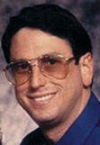

Bill Duff,
Associate Editor
Mark I. Montrose, has an unusual background that involves two paths. These paths bounced between becoming a professional musician and an electrical engineer.
 |
Mark I. Montrose |
His first significant exposure to engineering was when a high school teacher asked if he wanted to get an amateur radio license at age 16. This he achieved easily, progressing from Novice to Extra Class in the course of two years. His current call sign is K6WJ, having changed it from its original issue. He set up a radio shack in his bedroom with an ARC-5 crystal control transmitter and a BC-348 receiver. Every time he keyed the transmitter, the lights dimmed in the house and caused the TV to go into inverse video - a definite EMC effect. He had no knowledge about EMC at that time, except it was driving his family crazy. He also had no idea what he did to his neighbor’s TVs.
While his interest in electronics was increasing, so was his music talent as a student. He became an accomplished musician playing tenor saxophone in both high school and college. He has performed in Carnegie Hall (New York), Constitution Hall (Washington D.C.), Royal Albert’s Hall (London), plus other famous concert locations throughout Europe.
When it came time for college, he had to flip a coin between becoming a music major or electrical engineer. Engineering won.
For college, Mark selected California Polytechnic State University, San Luis Obispo. At Cal Poly, he double majored in Electrical Engineering and Computer Science, receiving two Bachelor of Science Degrees simultaneously in 1979. He spent two years as a co-op student working first at Mare Island Naval Air Station for six months and then 1-1/2 years at Vandenberg Air Force Base. While at Vandenberg, he was responsible as the primary design engineer for six modules used in a new control console for the Telemetry Integrated Processing System (TIPS) to support dual unmanned satellite launches. This system replaced a patch-panel, Honeywell/RCA analog system that had to be manually configured for each launch.
After graduation, Mark moved to the Silicon Valley in Northern California and began work as a digital designer, including work in the field of product engineering. He earned a Masters Degree in Engineering Management from the University of Santa Clara in 1983.
In 1980 while at Zilog, the FCC had issued a Docket that mandated compliance with CFR 47, Part 15. As with most EMC engineers, he was assigned the task of FCC engineer, because when he acknowledged to management that he had an amateur radio license, and that he knew what the letters RF meant, “tag, your-it” occurred. This started his career within the field of regulatory compliance. His experience as a product engineer became valuable as he learned how to design systems and make them compatible with other assemblies and their operating environment, while performing FCC/VDE, UL, CSA and T†V submittals.
After working at several other companies, he joined MIPS Computer Systems as principal compliance engineer, specializing in EMC. It was here that he was introduced to several world-class EMC consultants. These experts took the time to train and educate him in advanced EMC related to system design and PCB layout. This training set the stage for his current position as an independent EMC consultant in Santa Clara, California.
When Silicon Graphics purchased MIPS, Mark went independent, forming his own company where he is owner and principal consultant of Montrose Compliance Services, Inc. At MIPS, he recognized that there was little information available to the general engineering community regarding EMC and applied techniques. He started to document information that he learned from the experts into a design manual. This manual ended up becoming a book, which was not the original intent of this project. The book, Printed Circuit Board Design Techniques for EMC Compliance, published by IEEE Press has become one of the all-time best sellers for the IEEE.
As his consulting business developed, Mark started teaching seminars and public workshops. He was professionally trained and received classroom accreditation by the State of California Council for Private Postsecondary and Vocational Education in Printed Circuit Board Technology. He is an adjunct professor for several private training schools. He also teaches in-house seminars privately for client companies in addition to public workshops around the world.
After becoming successful as a consultant and lecturer, he authored another specialty book EMC and the Printed Circuit Board — Design Theory and Layout Made Simple. He is also a contributing author for the Electronics Packaging Handbook, a joint publication of CRC and IEEE Press.
Currently, Mark is a senior member of the IEEE and sits on the Board of Directors for the EMC Society. In addition, he is a Distinguished Lecturer for the Society, a member of the dB Society, a member of TC-8, Electromagnetic Product Safety, and a life member of the American Radio Relay League (ARRL). In addition to his affiliation with the IEEE, he is assessed by a European Competent Body as a Test Laboratory to ISO Guide 25, performing in-sitsu testing of industrial products.
Mark is married with two children, an 11-year old boy and 14-year old daughter (another accomplished tenor saxophone player in the family). There are two items not related to EMC that Mark has an interest in: scouting and martial arts. He is still affiliated with the scouting program as an assistant scoutmaster for his son’s troop. He enjoys monthly activities that include hiking, camping and backpacking. In regards to the martial arts that he is still active in today, Mark is black belt level in Shotokan Karate.